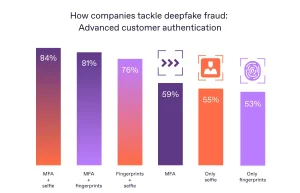5G vs. 6G: How the Latest Mobile Networks Are Revolutionizing Connectivity

Let’s be honest—mobile networks have come a long way since the days of waiting minutes for a single webpage to load. Today, 5G is already transforming how we stream, game, and even work. But guess what? 6G is already on the horizon, promising even wilder speeds and possibilities. So, what’s the real difference between these two? And how are they reshaping connectivity as we know it? Let’s dive in.
What Is 5G, Anyway?
5G—the fifth generation of mobile networks—isn’t just about faster downloads (though, sure, that’s a big perk). It’s a game-changer because it reduces latency—the annoying lag between your action and the network’s response—to near real-time levels. Think of it like upgrading from a bicycle to a sports car. Suddenly, everything just… flows.
Key features of 5G:
- Speed: Up to 10 Gbps (that’s 100x faster than 4G).
- Latency: As low as 1 millisecond.
- Capacity: Supports up to 1 million devices per square kilometer.
In practical terms? You can download a full HD movie in seconds, enjoy seamless VR experiences, and even enable remote surgeries with minimal lag. Not bad, right?
6G: The Next Leap
While 5G is still rolling out globally, researchers and tech giants are already racing toward 6G. Expected to debut around 2030, 6G isn’t just an incremental upgrade—it’s a paradigm shift. Imagine speeds up to 1 Tbps (yes, terabytes per second) and latency so low it’s practically nonexistent.
What makes 6G different?
- AI integration: Networks will self-optimize in real-time.
- Terahertz frequencies: Unlocks ultra-high-speed data transfer.
- Holographic communication: Yes, like sci-fi—but real.
6G could enable things like brain-computer interfaces, hyper-realistic virtual worlds, and even smart cities where every device communicates flawlessly. It’s not just about speed—it’s about redefining how we interact with technology.
5G vs. 6G: The Key Differences
Here’s the deal—while 5G is impressive, 6G is aiming for something… bigger. Let’s break it down:
| Feature | 5G | 6G |
| Speed | Up to 10 Gbps | Up to 1 Tbps |
| Latency | 1 ms | 0.1 ms (or less) |
| Frequency Bands | Sub-6 GHz, mmWave | Terahertz (THz) |
| AI Integration | Limited | Fully autonomous |
| Use Cases | Enhanced mobile broadband, IoT | Holograms, advanced AI, smart everything |
How These Networks Are Changing the Game
For Consumers
5G already makes buffering a thing of the past. But 6G? It’ll make waiting feel archaic. Imagine:
- Instant 8K streaming without a hiccup.
- Real-time holographic calls (no, not just Zoom with filters).
- Gaming so immersive it blurs reality.
For Businesses
From logistics to healthcare, faster, smarter networks mean radical efficiency. 5G enables things like remote diagnostics and smart factories. 6G? It could automate entire supply chains with AI-driven precision.
For Society
Think smart cities where traffic jams are predicted before they happen. Or rural areas getting high-speed internet via satellite-linked 6G. The gap between urban and remote connectivity could finally shrink.
The Challenges Ahead
Of course, it’s not all sunshine and holograms. Both 5G and 6G face hurdles:
- Infrastructure costs: Building these networks isn’t cheap.
- Security risks: More connectivity means more vulnerabilities.
- Energy consumption: Faster networks need more power—sustainability is key.
Still, the potential rewards? Worth every challenge.
Final Thoughts
5G is already reshaping our digital lives, but 6G? It’s poised to rewrite the rules entirely. Whether it’s instant global communication or AI-driven smart environments, the future of connectivity isn’t just fast—it’s limitless.








